SITR is an ISO/IEC 17025:2017 certified environment and food testing laboratory that offers on-site food analysis; ingredients, and nutrition testing as per FSSAI since 2021. We evaluate the quality, safety and authenticity of your food and feed along the entire supply chain, offering you individual advice and support at each step. Through cutting-edge research and development in laboratory analytics, we can aid you professionally as you face new challenges in markets and legislation.

Nutritional Analysis
This analysis includes the nutrient values viz:
- Total Fatty Acid.
- Saturated Fat
- Trans Fat
- Cholesterol
- Total Carbohydrates
- Dietary Fiber
- Total Sugars
- Protein
- Vitamins
- Calcium
- Iron
- Potassium
- sodium
- calories and more.
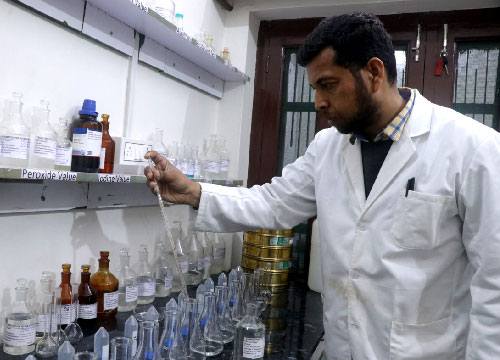
Shelf-life Testing
A food product is observed under controlled conditions in our lab to observe microbiological growth and chemical changes as it ages to determine how long the product is safe for consumption. “Use by” and “Sell by” are determined by replicating testing under the same condition by the qualified analysts who perform the analyses by advanced testing machines under the compliances laid by FSSAI since 2021.
Standard Shelf Life testing is evaluated by using the following parameters viz :
- pH
- Water Activity
- Total Yeast and mould
- Aerobic Plate Count
Microbial Limit Testing
Microbial Limit test is performed to assess how many and which of certain viable micro organisms are present in non-sterile, healthcare, pharmaceutical and cosmetic manufacturing samples that ranges from raw material to finished product. It comprises of detection of total aerobic microbial count(TAMC), total yeast and mold counts (TYMC) separately in the material. TYMC are used to detect and quantify the amount of fungal growth on plant material and allow for identification of viable yeast and mold species present.

Allergen Analysis
Our rapid bacteria test offers fast results, high sensitivity and aids in identifying the presence of important food allergens, such as milk, eggs, peanuts, tree, nuts, and cereals containing gluten (namely wheat, barley), soybeans, mustard etc.
Residual Pesticides
Pesticide residue refers to the pesticides that may remain on or in food after they are applied to food crops. A pesticide is a substance or a mixture of substances used for killing pests: harmful organisms in cultivated plants i.e. Acephate, Cypermethrin, Diazinon, Dichlorvos, Azinphos-methyl, Chlorpyrifos, Chlorpyrifos-methyl, Disulfoton, Endosulfan, Ethion and more.
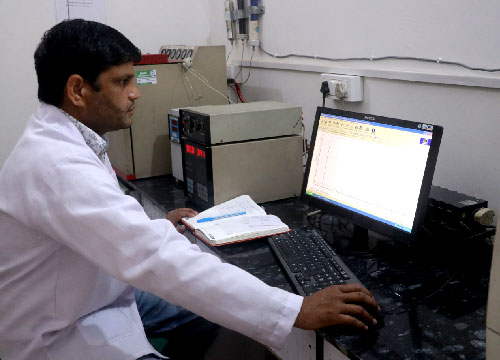
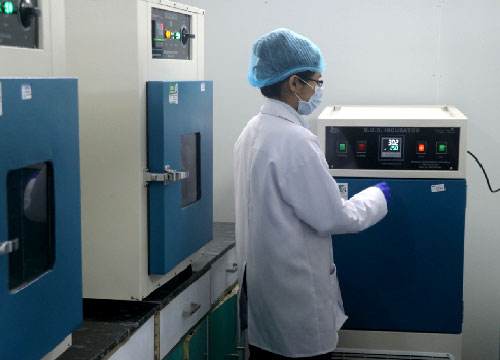
Nutraceutical Product
A nutraceutical product is generally described as a substance, which has a physiological comfort or provides protection against chronic disease. Commonly used nutraceutical products are:- Fortified dairy products (e.g., milk, cheese, yogurt) and citrus fruits (e.g., orange juice).
SITR environment and food testing laboratory provides the testing analysis of these products by evaluating parameters such as nutritional value, microbial load, calorific value, heavy metals, and many more.
Micronutrients of Fortified food products are analyzed by high-tech testing equipment and accurate results are submitted to clients within a short span of time.
Food Additives
We provide an immense range of test analysis and reports for food additives, which are used to enhance its flavour, appearance or to preserve the food. Food additives range from Antioxidants to Sweeteners and many more as listed:-
-
Antioxidants: these are capable in inhibiting the oxidative degradation of food caused by reacting with free oxygen and reactive oxygen species. The commonly added antioxidants include butylated hydroxy anisole (BHA), butylated hydroxytoluene (BHT), propyl gallate, phytic acid, tert-butylhydroquinone, ethoxyquin.
-
Colorants: may be natural or synthetic including carmine, amaranth, lemon yellow, sunset yellow, Allura red, brilliant blue, erythrosine etc.
-
Sweeteners: artificial sweeteners mostly added in bakery and confectionary industry include saccharin, cyclamate, aspartame, acesulfame, stevia etc.
-
Bleaching agents: sulfur dioxide, sulfite mostly applicable for cereal and grain industry, flours.
-
Preservatives: Salt, spices, vinegar, nitrates and nitrites, sulphites, sorbic acid, benzoic acid and Propionic Acid.
-
Emulsifying and stabilizing agents: Agar, sorbitol, pectin, alginates, dextrin, cellulose or fatty acids monoglycerides /diglyceride/Polyglycerides.
-
Anti-caking agents: calcium carbonates, calcium phosphates, magnesium phosphates; silicates.).
-
Buffering agents: Acetic acid, calcium oxide, monobasic ammonium phosphate, ammonium carbonate, citric acid, malic acid, lactic acid and tartaric acid.
-
Flour treatment agents: benzoyl peroxide.
-
Flavoring agents: spicy agents, Mono sodium glutamate.
-
Anti-putrefactive: Anti-putrefactive can extend shelf life of food, including sorbic acid, potassium sorbate, benzoic acid, sodium benzoate.
-
Illegal additives: Sodium formaldehyde sulfoxylate, melamine, pericarpium papaveris, Sudan red, basic orange, acid orange, malachite green, crystal violet, talcum powder, boric acid, borax, clenbuterol hydrochloride, diethylstilbesterol, β-lactamase, sodium thiocyanate, leather hydrolyzed proteins, rhodamine B, auramine, rongalit, dimethyl fumarate, and many more.
-
Other additives include: Thickener, defoamers, carbon monoxide, coagulators, raising agents etc.
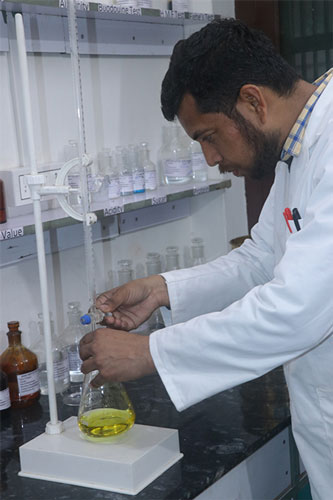
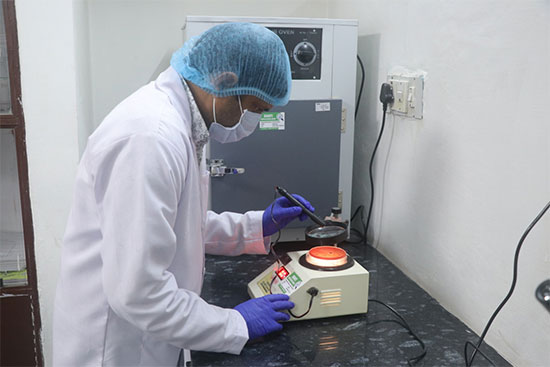
Environmental Swabbing/Production line Swabbing
SITR environment and food testing laboratory offers environmental swabbing service that can be part of an overall environmental monitoring program such as environmental swabbing, which involves the microbiological testing of food preparation, surfaces, equipment and utensils using various swab techniques to find out if pathogens are present. Swabbing of surfaces provides important data that detects unacceptable microbial contamination. Swabbing program will be implemented in the manufacturing facility followed by laboratory testing for the vector of interest e.g. Clostridium spp., Listeria spp, Salmonella & Shigella, Total Yeast and mould count, Total Coliform, E. Coli etc.
Mycotoxins
Mycotoxins are naturally occurring toxins that are produced by certain fungi.
Mostly under warm and humid conditions, the fungus grows on a variety of crops and foods, including grains, nuts, spices, dried fruits, apples, coffee beans, etc.
Endotoxins
It is a type of toxin released by microorganisms to the surrounding environment. It is explicitly related to gram-negative bacteria.

